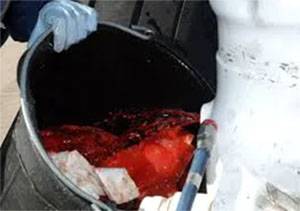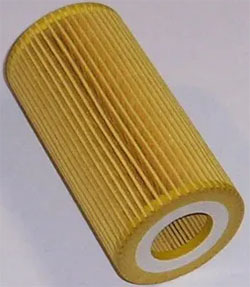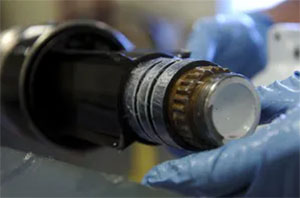Experts agree that more than 75% of hydraulic system failures are directly related to pollutants in hydraulic oil. With such figures, the importance of reducing hydraulic oil pollution is obvious. Efficiency loss, downtime, expensive maintenance, catastrophic failure and system flushing are just a few examples of the possible consequences of pollution problems. The impact of pollution is obvious, but the problem is how to prevent pollution from entering the system in the first place. This articleZhongyou Heavy IndustryBringHow to effectively reduce the pollution of hydraulic oil.
How does 1. contamination affect hydraulic systems?

When we think of contamination, we usually think of particulate contamination, which can include abrasive particles, such as sand, dirt, or metal flakes and chips, which can scratch precision-machined parts in equipment, significantly reducing efficiency, while triggering circulation that can damage components such as hydraulic motors and pumps, and non-abrasive particles are also very serious. Common problems caused by these particles include port blockage and valve blockage, which can lead to problems with flow and pressure control, and any type of particulate matter in the hydraulic fluid can increase the potential for cavitation.
There is also the problem of moisture contamination, which can react with additives in the hydraulic oil and cause problematic chemical reactions, and the presence of water in the hydraulic fluid can cause corrosion, which can be a critical issue for many hydraulic systems. The water in the hydraulic oil also affects its elasticity and performance. The most important is the cavitation phenomenon caused when water is trapped in the hydraulic fluid due to pressure changes.
Contamination can also cause your hydraulic oil to degrade, which can reduce the performance of the hydraulic oil and adversely affect its ability to lubricate and protect components within the system. Problems such as corrosion always occur, and thick sludge or sludge is formed, causing serious problems. These pollution problems are the main reason for reducing hydraulic oil pollution.
2. strategies to reduce hydraulic oil contamination:

In a practical sense, it is not possible to completely eliminate all pollution within a hydraulic system, but the degree of pollution can be minimized. This minimization can be achieved through a carefully designed pollution reduction strategy that takes into account the operating conditions of the system, its environment, and the components that make up the system.
When developing strategies to reduce hydraulic oil pollution, you will need to focus on the design of the system and select feasible and quantifiable goals. Next, develop a list of actions that will support the achievement of these goals. Typical actions can be divided into several categories, such as exclusion, cleaning, filtering, and storage and processing.
1) Exclude particles and moisture
Removing contaminants after they enter the hydraulic system can be expensive and time-consuming, and flushing a contaminated system can be quite complicated, requiring not only the addition of fresh hydraulic oil, but also the removal of old hydraulic oil from the system and the addition of all new filters.

Filters-The best way to deal with contaminants is to exclude them from the system first, rather than removing them afterwards. Removing contaminants from the system means preventing them from entering the system and relying on filters to capture the contaminants that do enter it. A good understanding of the source of pollutants goes a long way to stopping or at least minimizing them.
Built-in Contamination-Built-in contamination is present in new system components and is usually left behind during the manufacturing process. Examples of built-in contamination include sand particles left over from metal castings, metal fragments left after holes are punched in the valve block, or threads on a rag used to wipe hydraulic hose connections. It cannot be ruled out, but it can be minimized by flushing new components with fresh hydraulic oil.

3. Leakage-When the system leaks hydraulic oil, not only hydraulic oil will leak, but also pollutants may penetrate. This is a good example of why a leak should be addressed as soon as it is discovered. Many of these leaks are caused by the failure of seals, which have reached the end of their service life and need to be replaced.
4. Component failure-If a component such as a pump or motor suffers a catastrophic failure, the failure will propagate through the system if the filter does not spread very harmful contaminants throughout the system. This is why it is so important to replace the filter when it fails. It is not uncommon for systems to require thorough flushing after a particularly serious failure (for example, bearing failure will release steel chips and steel chips).
Fresh hydraulic oil-Another source of contamination is fresh hydraulic oil, which can be contaminated with particles and moisture at the same time. The cleanliness of new hydraulic oil usually does not meet the cleanliness requirements of new equipment. This type of contamination can be ruled out by filtering all fresh fluid before it is added to the system.
As previously mentioned, contamination can also be introduced during maintenance and repair (e. g., whenever the system is opened). This type of contamination can be ruled out by keeping it clean.
2) Cleanliness of hydraulic system:

One of the main ways that pollution enters the system is during repairs and maintenance. During repairs, a port will be opened, dust in the air of the workshop will enter the interior, and there may be some residual abrasive particles from previous repairs on the work surface. The end of the hydraulic hose may have fallen on the dirty workshop floor and was not completely wiped clean before being reconnected.
For field devices, the problem is even more serious. If the machine is not cleaned first, dirt and sand may fall into the hydraulic oil tank when new fluid is added, the ports may open unnecessarily and moisture may condense inside.
Dirty rags, dusty tools, hard workbenches, rusty liquid storage containers-all of these may cause system contamination. The starting point for preventing and reducing hydraulic oil contamination is cleanliness. Tools, equipment and work surfaces must be kept clean, and care must be taken when opening the system for maintenance and repairs to ensure that there is no opportunity to bring contaminants into the system.
3) Filter all fresh hydraulic oil:
Sewage should be a top priority, including filtering all hydraulic oil entering the system, and using high-quality filters will indeed enter the internal particles captured.
Fresh hydraulic oil does contain contaminants. In fact, it is not uncommon for new hydraulic oil to contain particles as large as 5 microns, which exceeds the standard cleanliness requirements of modern hydraulic systems. This is why special emphasis is placed on thoroughly filtering the fluid before adding it to the system.
4) Correct storage and handling of hydraulic oil:
In order to minimize the contamination of the liquid, it is essential to keep it properly, especially to prevent its biggest enemy-moisture. Here are some tips and guidelines for safely storing hydraulic fluids:
1) Make sure that all covers are firm on a regular basis;
2) Put the container on its side to prevent water from accumulating on the top;
3) Keep the hydraulic oil at a constant temperature to prevent moisture intrusion due to condensation.
5) Hydraulic oil analysis and measurement:

It is essential to schedule regular tests to determine the extent to which the target is achieved, which is done through rigorous fluid analysis and measurement procedures.
3. hydraulic oil sampling and analysis:
Fluid analysis involves sampling the hydraulic fluid at various points in the system and then analyzing it internally or sending it to a laboratory, and the results of the analysis provide a measure of the level of contamination that not only provides an indicator to assess the cleanliness of the system, but also helps trace the source of the contamination. Once these sources are identified, exclusion measures can be taken to further reduce the entry of contamination.
4. the importance of reducing hydraulic oil contamination:
The best defense against the loss of efficiency and damage caused by contaminated fluids in hydraulic systems is to develop a robust and thorough strategy to reduce the contamination of hydraulic fluids, and blowdown, cleaning, filtering, proper storage and regular analysis are key components of an effective pollution reduction strategy.
Once a good strategy is developed, the benefits will include higher efficiency, higher productivity, longer component life, lower repair and maintenance costs, reduced downtime, and significantly better reliability. In short, implementing a pollution control plan may be the best decision you can make for your hydraulic system and bottom line.










